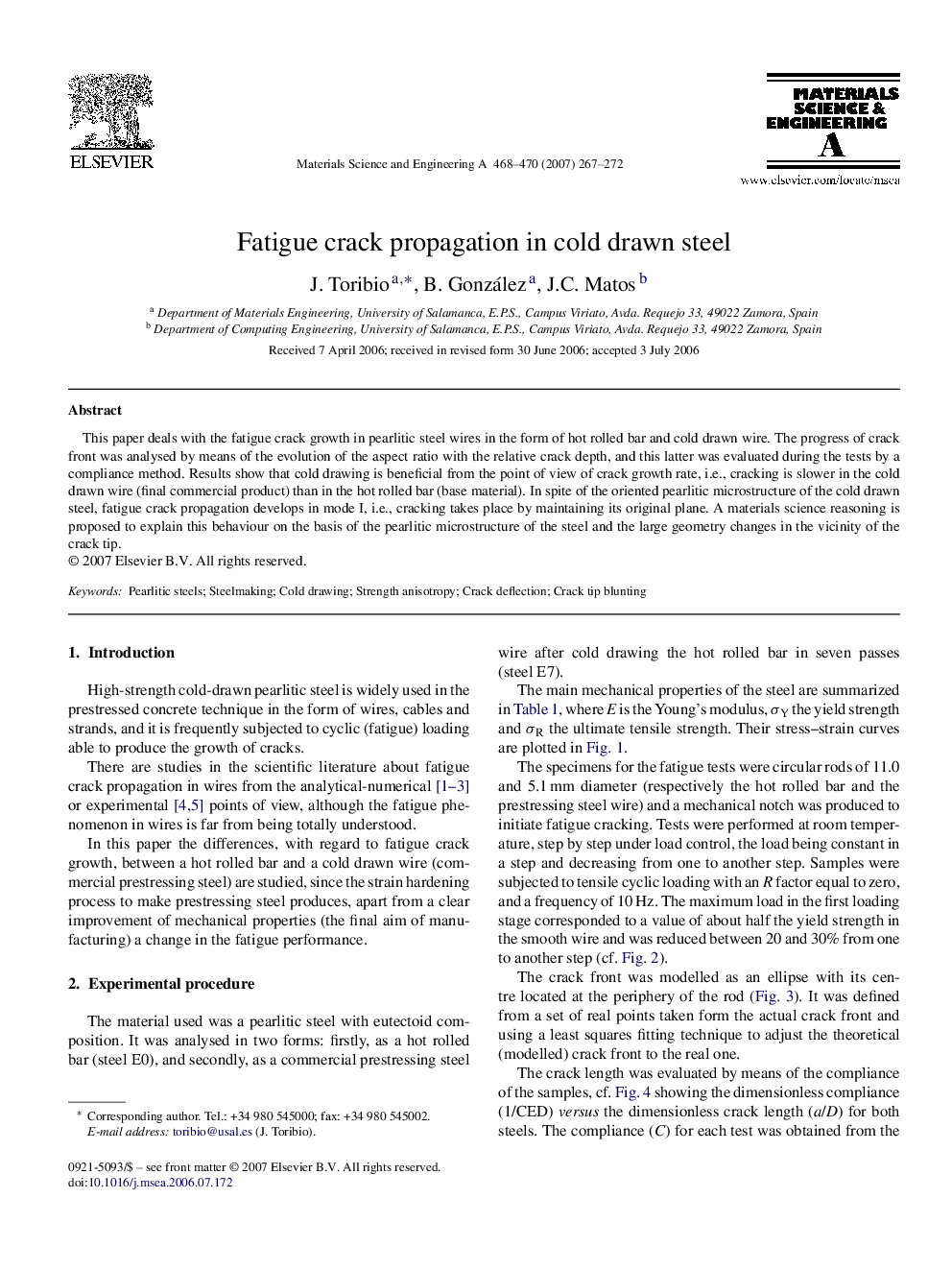| Article ID | Journal | Published Year | Pages | File Type |
|---|---|---|---|---|
| 1583348 | Materials Science and Engineering: A | 2007 | 6 Pages |
This paper deals with the fatigue crack growth in pearlitic steel wires in the form of hot rolled bar and cold drawn wire. The progress of crack front was analysed by means of the evolution of the aspect ratio with the relative crack depth, and this latter was evaluated during the tests by a compliance method. Results show that cold drawing is beneficial from the point of view of crack growth rate, i.e., cracking is slower in the cold drawn wire (final commercial product) than in the hot rolled bar (base material). In spite of the oriented pearlitic microstructure of the cold drawn steel, fatigue crack propagation develops in mode I, i.e., cracking takes place by maintaining its original plane. A materials science reasoning is proposed to explain this behaviour on the basis of the pearlitic microstructure of the steel and the large geometry changes in the vicinity of the crack tip.
